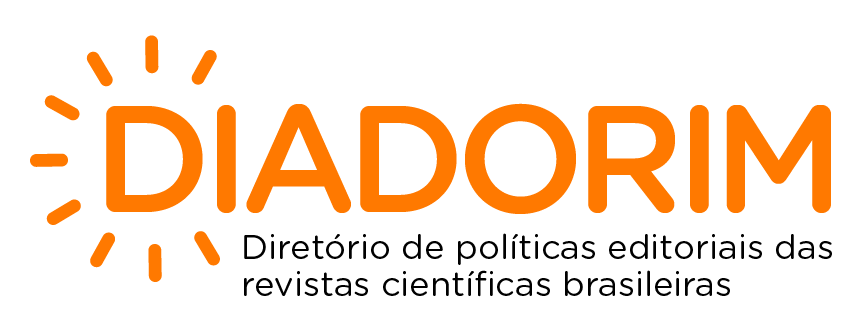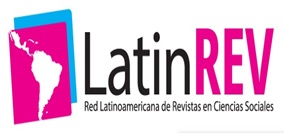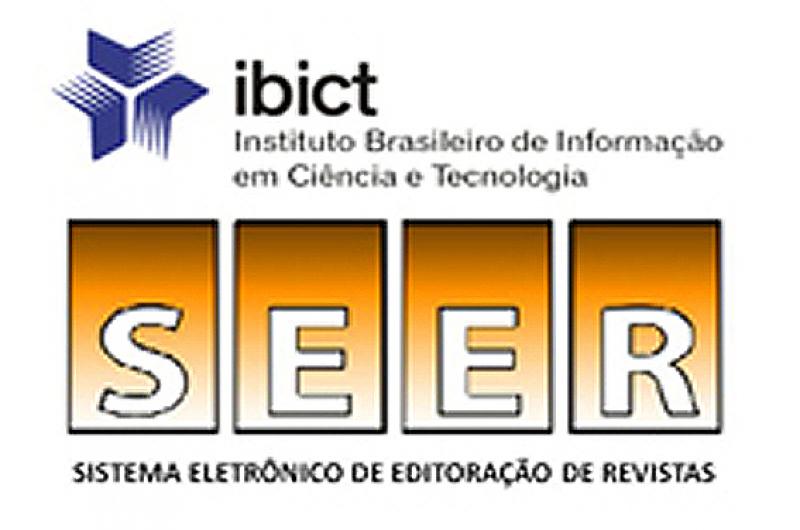Avaliação dos Impactos Ambientais nos Solos e Cursos D’água Resultantes do Descarte Inadequado de Resíduos Têxteis
Uma Revisão de Literatura
Visualizações: 28DOI:
https://doi.org/10.31416/rsdv.v13i3.892Keywords:
Efeitos Ambientais; Solos; Corpos Hídricos; Resíduos Têxteis, Efluentes Têxteis.Abstract
The textile industry is widely recognized as one of the main sources of soil and water pollution. This is due to its intense demand for water in production processes and the significant release of pollutants into the environment, especially into water bodies. Given this situation, it is of paramount importance to conduct comprehensive analyzes of the environmental impacts caused by the disposal of textile waste, both liquid and solid. Due to the scarcity of literature that substantially addresses the environmental effects on watercourses and, in particular, on the soil, resulting in this sense, this study proposes a brief review of the literature that aims to characterize and identify the theme about the impacts and potential impacts that such damage causes to the environment, in particular, on soils and watercourses. A meta-analysis was conducted with data from the Scopus platform, while the VOSviewer software was used to assess the relevance of analyzing the environmental impacts on soils resulting from inadequate disposal of textile effluents. The results revealed several environmental impacts, such as climate change, loss of biodiversity and habitats, air pollution, contamination of groundwater, impairment of soil fertility, inhibition of plant growth and, finally, the threat to agricultural productivity.
References
ABNT - ASSOCIAÇÃO BRASILEIRA DE NORMAS TÉCNICAS. Sistema de Gestão Ambiental - Especificação e Diretrizes para Uso - NBR 12.208, 1996.
ALEEM, M. et al. Coagulation- and Adsorption-Based Environmental Impact Assessment and Textile Effluent Treatment. Water, Air, and Soil Pollution, v. 231, n. 2, 2020.
ARAÚJO, B. A. et al. Processos oxidativos avançados aplicados no tratamento de efluentes da produção de membranas: revisão de literatura. Research, Society and Development, v. 10, n. 4, p. e27210414253-e27210414253, 2021.
AZANAW, A. et al. Textile effluent treatment methods and eco-friendly resolution of textile wastewater. Case Studies in Chemical and Environmental Engineering, v. 6, 2022.
CAFÉ, L.; BRÄSCHER, M. Organização da informação e bibliometria. Encontros Bibli: revista eletrônica de biblioteconomia e ciência da informação, n. Esp, p. 54-75, 2008.
CALLEGARO, A. C. G. Ensaios de toxicidade com organismos da fauna edáfica e sementes avaliando o diclofenaco sódico no solo. 2021. Tese de Doutorado. [sn].
CAMPOS, L. G. C. Questões ambientais relacionadas ao processo de produção na Indústria Têxtil. 2018. Tese de Doutorado. Dissertação (Bacharelado em Química), Universidade Federal de São João del-Rei, São João del-Rei.
CARDOSO, L. M. Água-fonte da vida. Editora do Brasil, 2022.
CBHSF. Moda e Água: a revolução é urgente e envolve sociedade, empresas e governos. 2019. Disponível em: https://cbhsaofrancisco.org.br/noticias/novidades/moda-e-agua-a-revolucao-e-urgente-e-envolve-sociedade-empresas-e-governos/. Acesso em: 20 ago. 2023.
CHAVES, N. O.; DE CARVALHO, L. C. F.; OLIVEIRA, R. M. P. B. As principais técnicas utilizadas para remoção de corantes das águas residuais da indústria têxtil: uma revisão. Perspectivas da Ciência e Tecnologia v. 14, 2022.
CHEN, F. et al. Assessing environmental impact of textile production with water alkalization footprint. Science of the Total Environment, v. 719, 2020.
CONSELHO NACIONAL DO MEIO AMBIENTE – CONAMA. Resolução 001/1996. Brasília, 1996.
DA COSTA, G. S.; MARVULLI, M. V. N. Soluções alternativas para o tratamento, disposição ou reutilização de dejetos animais provenientes de atividade suinícola no Brasil. Anais Sintagro, v. 11, n. 1, 2019.
DA COSTA, W. K. O. C. et al. Preparation of Activated Carbon from Sugarcane Bagasse and Removal of Color and Organic Matter from Real Textile Wastewater. Water, Air, and Soil Pollution, v. 232, n. 9, 2021.
DA SILVA, M. de F.; MENELAU, A. S.; RIBEIRO, A. R. Bezerra. Impactos ambientais registrados nos estudos das lavanderias têxteis do arranjo produtivo do agreste pernambucano: uma releitura pela perspectiva da sustentabilidade ambiental. Revista Gestão & Sustentabilidade Ambiental, v. 10, n. 3, p. 77-103, 2021.
FUNDAÇÃO ELLEN MACARTHUR. 2022. Disponível em: https://ellenmacarthurfoundation.org/. Acesso em: 20 jul. 2023.
FUSATI. Gestão Otimizada da Água na Indústria Têxtil. 2023. Disponível em: https://www.fusati.com.br/gestao-otimizada-da-agua-na-industria-textil/. Acesso em: 20 ago. 2023.
HAAG, A. B.; IBSCH, R. B. M. PRODUÇÃO DE CORANTES NATURAIS PARA A INDUSTRIA TEXTIL. Revista da UNIFEBE, v. 1, n. 27, 2022.
HASSAN, J. et al. Optimizing textile dyeing wastewater for tomato irrigation through physiochemical, plant nutrient uses and pollution load index of irrigated soil. Scientific Reports, v. 12, n. 1, 2022.
HOSSAIN, M. N. et al. Identification and quantification of microplastics in agricultural farmland soil and textile sludge in Bangladesh. Science of the Total Environment, v. 858, 2023.
KHANDAKER, N. R. et al. Treatment of textile wastewater using calcium hypochlorite oxidation followed by waste iron rust aided rapid filtration for color and COD removal for application in resources challenged Bangladesh. Groundwater for Sustainable Development, v. 10, 2020.
KOTHARI, R. et al. Impact of Pollutant Load from Textile Dyeing Industry Wastewater on Biometric Growth Profile of Vigna radiata. Bulletin of Environmental Contamination and Toxicology, v. 109, n. 6, p. 969–976, 2022.
MAINARDI, P. H. Características físico-químicas, microbiológicas e ecotoxicológicas de efluentes têxteis e proposta de tratamento por coagulação/floculação. 2021.
MAJHI, P. K. et al. Impact of Flow Rate in Integration with Solar Radiation on Color and COD Removal in Dye Contaminated Textile Industry Wastewater: Optimization Study. Energy Engineering: Journal of the Association of Energy Engineering, v. 119, n. 1, p. 419–427, 2022.
MARQUES, C. F.; DA CONCEIÇÃO, V. M. Alternativas tecnológicas de tratamento de efluentes têxteis: uma revisão bibliométrica. Revista Internacional de Ciências, v. 12, n. 3, p. 194-212, 2022.
MARTINS, A. G. et al. Os impactos ambientais causados pela indústria têxtil. Revista Interfaces, v. 15, n. 10, 2023.
MIAO, L. et al. Sustainable reuse of nickel converter slag as a heterogeneous electro-fenton catalyst for treating textile dyeing wastewater: Activity, mechanism and stability assessment. Journal of Cleaner Production, v. 378, 2022.
NUNES, G. R. Geração e tratamento de efluentes da indústria têxtil. 2019.
QUEIROZ, M. T. A. et al. Reestruturação na forma do tratamento de efluentes têxteis: uma proposta embasada em fundamentos teóricos. Gestão & Produção, v. 26, p. e1149, 2019.
RAMOS, M. D. N. et al. Análise crítica das características de efluentes industriais do setor têxtil no Brasil. Revista Virtual de Química, v. 12, p. 913-929, 2020.
RIBEIRO, M. G. N. Impactos ambientais em corpos d’água da bacia do rio paciência. 2018.
ROCHA, S. A. Água, elemento representativo da ecologia integral. Ecologia Integral p. 85, 2021.
RUKSHAR, N. B. Wastewater treatment by emerging wastewater treatment technologies: A systematic review. Bulgarian Chemical Communications, v. 54, p. 78–83, 2022.
SOUZA, H. H. J. de. Metodologia. Prisma, 2023.
TASSI, F. G. Metodologias para tratamento de efluentes têxteis: uma revisão. 2022.
TORRES, L. M. et al. Poluição atmosférica em cidades brasileiras: uma breve revisão dos impactos na saúde pública e meio ambiente. Naturae, v. 2, n. 1, p. 23-33, 2020.
TUSIEF, M. Q. et al. Bioremediation of Textile Wastewater through Floating Treatment Wetland System. International Journal of Agriculture and Biology, v. 22, n. 4, p. 822–826, 2019.
VALENTIM, L. S. O. Contaminação do solo e dos mananciais no brasil: contextos e perspectivas. Rio de Janeiro, RJ, Fundação Osvaldo Cruz (FIOCRUZ), 2020.
YADAV, S. et al. Recent analytical techniques, and potential eco-toxicological impacts of textile fibrous microplastics (FMPs) and associated contaminates: A review. Chemosphere, v. 326, 2023.
ZHOU, H.; ZHOU, L.; MA, K. Microfiber from textile dyeing and printing wastewater of a typical industrial park in China: Occurrence, removal and release. Science of the Total Environment, v. 739, 2020.
Downloads
Published
How to Cite
Issue
Section
License
Copyright (c) 2025 Revista Semiárido De Visu

This work is licensed under a Creative Commons Attribution 4.0 International License.















